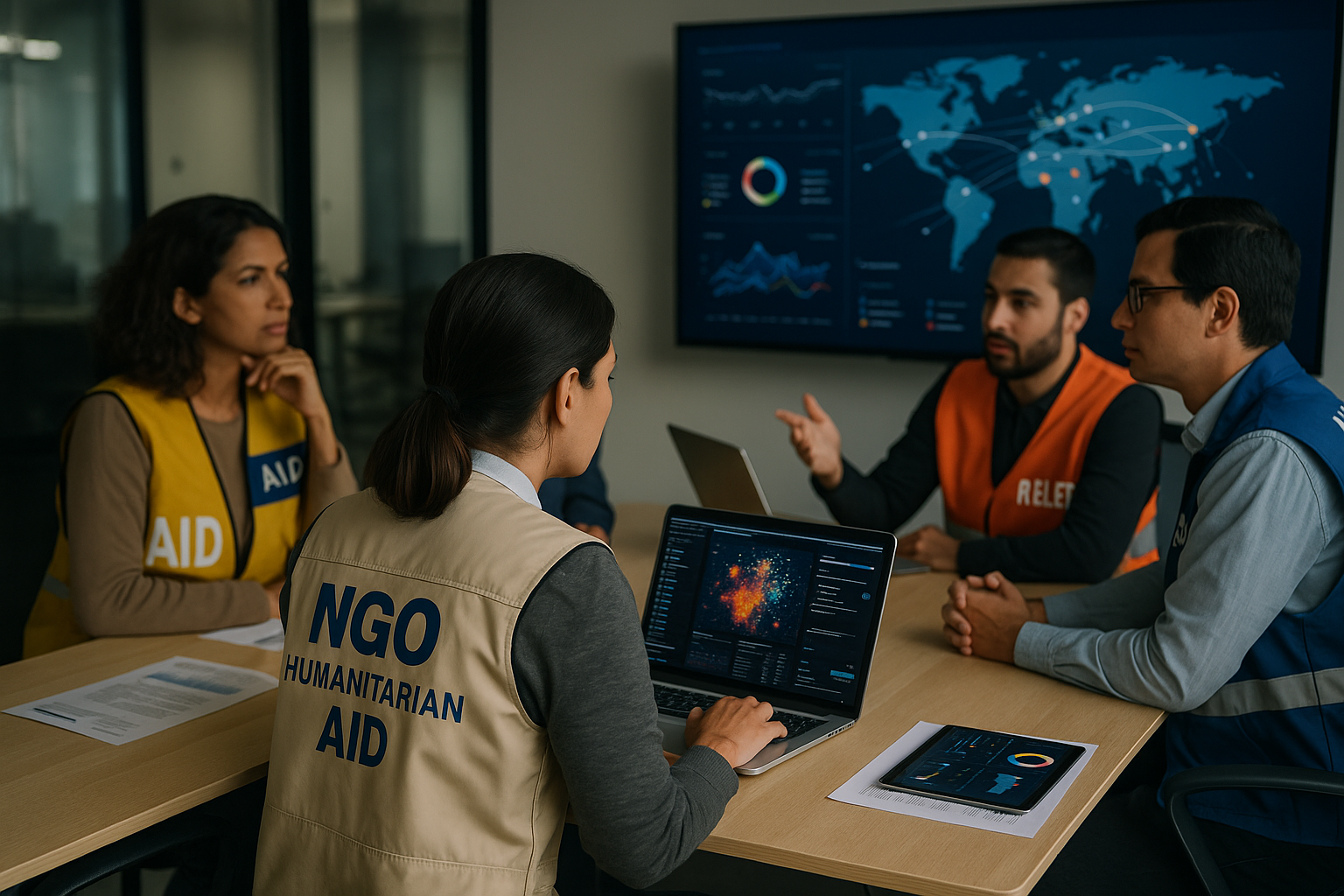Artificial intelligence (AI) is reshaping nearly every industry — and humanitarian aid is no exception. From predicting famines to optimizing aid delivery, AI offers speed and precision in crisis response. Yet for NGOs, the question isn’t just how to use AI — it’s how to use it ethically.
In humanitarian settings where lives are at stake, unregulated algorithms can do harm: misallocating food, exposing private data, or amplifying inequality. For organizations like Umma Foundation, ethical AI isn’t a luxury — it’s a responsibility.
What Is Ethical AI in Humanitarian Action?
Ethical AI means using technology in ways that protect human rights, dignity, and fairness. In the humanitarian context, this involves:
- Transparency – clearly explaining how algorithms make decisions.
- Accountability – ensuring human oversight for every AI-driven outcome.
- Privacy – protecting sensitive data such as refugee identities or medical histories.
- Inclusivity – avoiding bias by designing systems that serve all communities equally.
The UN Office for the Coordination of Humanitarian Affairs (OCHA) defines AI in humanitarian work as a force for good only when it enhances, not replaces, human judgment. In fragile environments, ethical guardrails must guide innovation.
The Expanding Role of AI in Humanitarian Aid
AI is already making measurable impact across the humanitarian sector:
- Crisis Prediction: Machine learning models now forecast famine, floods, and disease outbreaks weeks before they happen. (UN Global Pulse)
- Aid Distribution: Algorithms help allocate resources more efficiently, minimizing waste and duplication. (World Food Programme Innovation Accelerator)
- Fact Verification: AI systems flag misinformation spreading during emergencies — essential in a digital age of disinformation. (UNESCO)
AI enables faster decisions, broader reach, and data-driven insight — but without ethics, these advantages risk turning into new forms of injustice.
The Ethical Challenges of AI in Crisis Zones
AI’s benefits in humanitarian work are undeniable, but its pitfalls are equally serious.
1. Bias and Inequality
AI systems learn from existing data, which often reflects real-world biases. In conflict zones, biased algorithms can marginalize vulnerable groups or overlook remote regions.
The Harvard Humanitarian Initiative warns that even minor data distortions can translate into major humanitarian inequalities.
2. Privacy and Data Protection
When humanitarian organizations handle personal data — such as refugee status, health conditions, or biometric IDs — a data breach can put lives at risk. Protecting privacy is not just an ethical duty; it’s a matter of survival.
3. Accountability and Transparency
Who is responsible when an algorithm makes a mistake? NGOs must ensure humans remain “in the loop,” able to intervene and override AI systems when errors occur.
4. Digital Colonialism
Many AI tools are developed by tech companies in the Global North, then deployed in the Global South without cultural or contextual adaptation. This can unintentionally perpetuate dependency or reinforce power imbalances. Local participation is essential for fairness and sustainability.
How NGOs Can Implement Ethical AI
Humanitarian organizations can take tangible steps to integrate AI responsibly:
1. Adopt Ethical Guidelines
Follow frameworks like Signpost AI’s Responsible Humanitarian AI Guidelines and UNICEF’s AI for Children Policy Guidance.
These emphasize transparency, fairness, and safety in all algorithmic systems.
2. Build Local Capacity
Ethical AI depends on local ownership. Partner with universities and local tech hubs to train data scientists who understand the realities on the ground. Create culturally relevant datasets rather than importing foreign models.
3. Keep Humans in the Loop
AI should augment, not replace, human decision-making. Combine predictive models with community consultation to ensure aid aligns with lived experience.
4. Ensure Transparency and Donor Trust
Be open about how algorithms work and where data comes from. NGOs can publish ethical audits or data reports to strengthen accountability — much like Umma Foundation’s Financial Disclosure.
Real-World Examples of Responsible AI
Ethical AI is not theoretical — it’s already being tested in humanitarian programs worldwide:
- WFP’s HungerMap LIVE: Uses AI to predict food insecurity while protecting sensitive data.
- UNHCR’s Project Jetson: Employs machine learning to forecast refugee movements before crises peak. (UNHCR Innovation Service)
- IFRC’s Data Playbook: Offers open-source guidance for ethical data use in humanitarian contexts. (IFRC)
Each of these projects demonstrates how technology and ethics can co-exist — when human dignity stays at the center of design.
The Risks of Ignoring AI Ethics
When AI systems are deployed without accountability, the consequences can be severe:
- Misallocation of aid resources.
- Data leaks that endanger lives.
- Discrimination in relief targeting.
- Loss of trust between NGOs and the communities they serve.
A 2024 UN University study found that nearly 70% of humanitarian agencies using AI lacked a formal ethical framework, showing just how urgent the issue is.
The Path Forward — AI with Humanity
The future of humanitarian aid depends on balancing innovation with integrity. Ethical AI is not about slowing progress; it’s about making progress safely.
For organizations like Umma Foundation, technology is a means to an end — not a replacement for compassion. As the sector embraces machine learning and data analytics, ethics must remain its moral compass.
The real question is not “Can AI save lives?” but “Can it do so without compromising humanity?”
How You Can Support Ethical Humanitarian Innovation
- Explore Umma’s ongoing initiatives: Campaigns
- Become a sustaining partner through Monthly Giving
- Learn how transparency drives change via Financial Disclosure
Conclusion
As humanitarian crises grow more complex, the tools we use to address them must evolve — but never at the expense of human dignity. Artificial intelligence can predict, protect, and even prevent suffering, yet it also carries the power to deepen inequality if left unchecked.
True ethical AI in humanitarian aid is not about choosing between technology and humanity — it’s about ensuring that one amplifies the other. It’s about designing systems that learn from compassion as much as they learn from data.
For NGOs like Umma Foundation, the mission is clear: to build a future where innovation serves people, not profits — where transparency, fairness, and accountability guide every algorithm that touches a human life.
Because in every line of code and every act of compassion, we have a choice — to build a world where ethics lead innovation.
Join us in making that choice. Explore Umma’s campaigns, support ethical humanitarian innovation, and see how transparency turns values into measurable impact.





.jpg)





